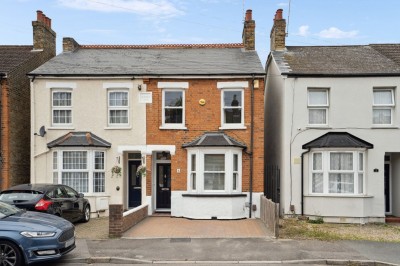The UK residential property market is navigating a complex landscape shaped by recent policy changes, economic conditions, and shifting buyer sentiment. Following the reversion to previous Stamp Duty thresholds in April, the market experienced a surge in transactions at the end of Q1, but this momentum has since slowed.
Market Trends and Transaction Volumes
April saw a significant decline in residential property transactions, with figures dropping 64% compared to March and 28% year-on-year. This dip was largely anticipated as buyers had rushed to complete purchases before the Stamp Duty changes took effect. Despite this slowdown, we remain optimistic about the market’s resilience, particularly as the summer months typically bring increased activity.
Interest Rates and Affordability
The Bank of England’s recent base rate cut to 4.25% has provided some relief for buyers, with expectations that it could fall further to 3.75% by the end of the year. Lower interest rates may ease mortgage affordability pressures, especially for first-time buyers. However, inflation remains a concern, having ticked up to 3.5% in April, which continues to squeeze household budgets.
Supply and Demand Dynamics
The UK housing market is still grappling with supply constraints. The government’s target of 1.5 million new homes by 2029 is likely to fall short by at least 500,000, which could keep upward pressure on prices despite softer demand. However, recent government reforms aimed at supporting housebuilders may help increase supply and improve affordability.
Regional Variations and Buyer Sentiment
Different regions are experiencing varied market conditions. London remains a focal point for residential development, though project starts have declined 15% year-on-year. Meanwhile, the North West has seen strong growth, driven by affordability and employment opportunities. Buyer sentiment is mixed, with some pausing their purchasing decisions due to economic uncertainty, while others are encouraged by improved mortgage conditions.
Rental Market Trends
Rental growth has slowed compared to previous years, with UK rents forecast to rise by 3.0% in 2025, down from the sharp 9.0% increase in 2024. London rents are expected to grow slightly faster at 4.0%. Despite this moderation, affordability remains a concern, particularly in urban areas where demand remains high.
Rental Supply Challenges
The market continues to face a shortage of rental properties. Some landlords have been exiting the market due to rising costs and regulatory changes, further tightening supply.
While Build-to-Rent developments are expanding, they are not sufficient to meet tenant demand.
Outlook for the Coming Months
While the sales market has faced a post-March dip, resilience remains. The next few months will be shaped by macroeconomic factors, including interest rate movements, inflation trends, and government policies. If mortgage rates remain attractive and supply constraints ease, the market could see renewed momentum heading into the latter half of the year.
While rental growth is moderating, structural supply issues and affordability constraints will continue to shape the market. Tenant demand remains strong, but affordability ceilings may limit further rent increases.
Overall, while challenges persist, the UK residential property market continues to adapt, with opportunities emerging for buyers and investors willing to navigate the evolving landscape.
Darren Murphy







